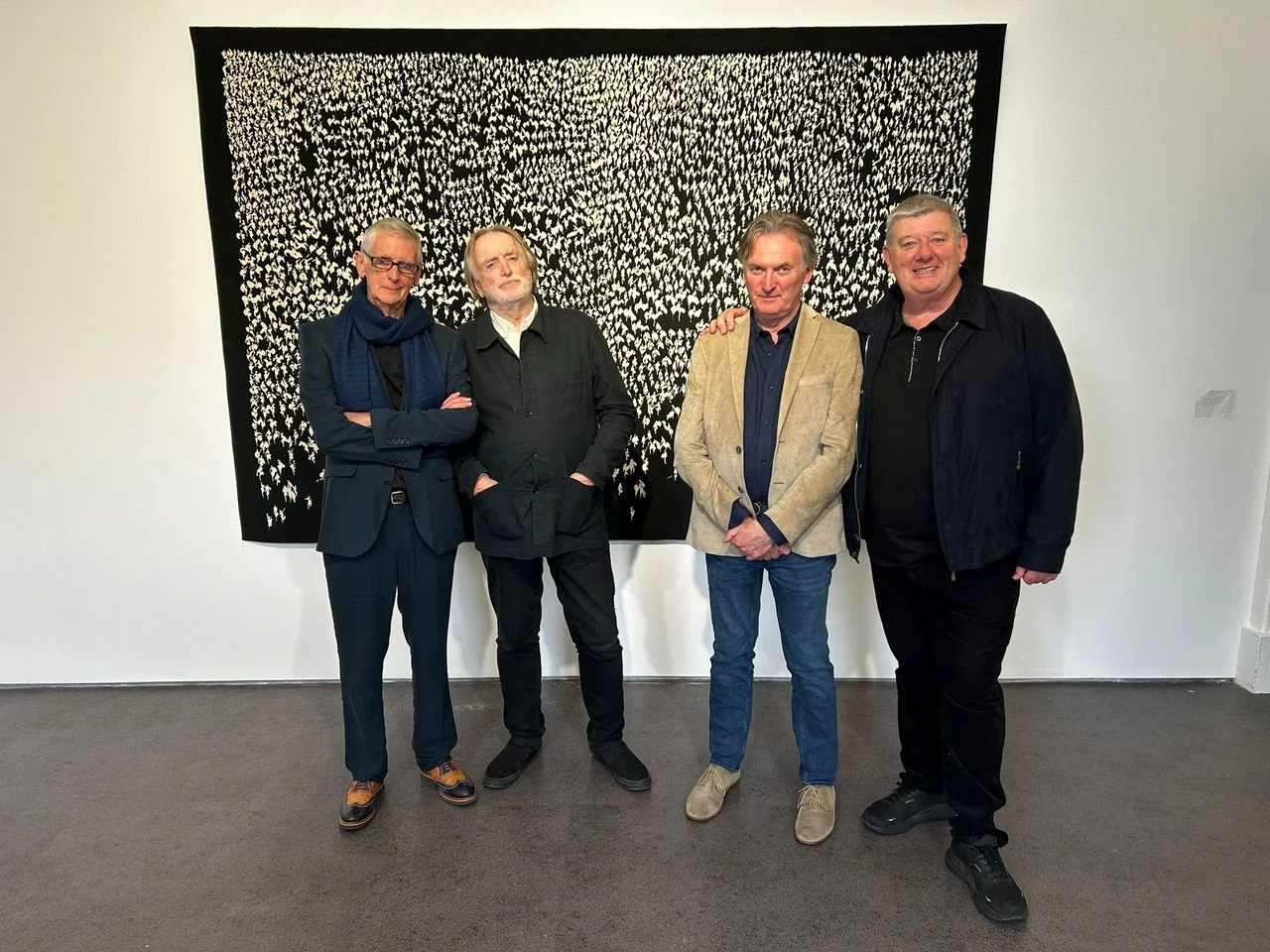July 2024
BRINGING IT
ALL BACK HOME
Syd Bluett in Kells exhibition poster artwork
If you’re acquainted with the byways of social media, you may have seen the recent photo of radio & TV presenter John Creedon alongside usual suspects, Barry Devlin, Jim Lockhart and myself.
The photo was taken in IMMA where RTE producer Rory Cobbe had persuaded the gallery and the Louis le Brocquy Estate to hang a marvellous piece from IMMA’s permanent collection especially for the occasion, the filming of an episode of Creedon’s Musical Atlas of Ireland to be screened in the autumn.
The impressive tapestry, The Táin: Army massing (184 x 280 cm) was created in 1999 from the artist’s original 1969 drawing for Thomas Kinsella’s version of The Táin. One of an edition of 9, this in an Aubusson Tapestry (Atelier René Duché).
“The champions and the Seven Sons are
come to take away the Donn.”
(Charolais, The Táin)
The weavers of Aubusson were granted the title of Manufacture Royale in 1665. Their output has always been commercially available and is generally considered to be the finest in the world. It was a great privilege to be afforded this private engagement with The Táin tapestry.
Eamon Carr, Barry Devlin, Jim Lockhart, John Creedon (photo Rory Cobbe)
Chatting with John, I recalled how my motivation had received a potent psychic charge when writing for the album in 1972 the day I came across a line in W.B. Yeats’ Preface to Lady Gregory’s Cuchulainn of Muirthemne (1902). Ensuring we understood how the mythic tale was living history, Yeats pointed out, “We Irish should keep these personages much in our hearts, for they lived in places where we ride and go marketing, and sometimes they have met one another on the hills that cast their shadows upon our doors at evening.” The poet’s son Michael, a member of Seanad Éireann at the time, graciously granted us permission to use the quotation on the Horslips’ album sleeve.
The work of Louis le Brocquy (1916-2012), particularly his paintings from the late 1950s and early ‘60s, has long been important to me. I reference his influence in the Preface to Deirdre Unforgiven (Doire Press). “So as to give voice to how I heard the story of the past resonating in the now, I could but trust in what artist Louis le Brocquy has described as ”a secret logic of the imagination.”
Another visual artist whose work I’ve connected with is Syd Bluett. Formerly art director on a range of Irish magazines from In Dublin and Magill to Image Interiors and Wine Ireland, Syd’s passion has been for the tradition of hand-painted signs and decorative shop-fronts. His gallery paintings reflect this and also his interest in contemporary architecture, word play, lettering and typography
Eamon Carr, Syd Bluett (photo Kieran Slyne)
he Toradh 2 Gallery is the venue for Syd Bluett in Kells, an exhibition of 23 recent pieces. Located in the Courthouse, built in 1801 and designed by Irish architect Francis Johnston, who also designed the G.P.O., the bright gallery space shows off the work to great effect.
Syd also designed the logo for Dusk, my verse play (directed by Denis Conway) which ran in the G.P.O. and the New Theatre in Dublin. It was a great thrill when he presented his crafted logo, which brilliantly reflected the tone of the piece.
“The castle of heroes
will welcome us home..”
(The Caretaker’s Song, Dusk)
It was marvellous to catch-up with Syd in Kells, my home town, and have lunch with him and photographer Kieran Slyne in the splendid Eureka House & Gardens across the road from the Courthouse. I hadn’t seen Kieran since he filmed my contribution for an upcoming documentary on Nanci Griffith that’s being directed by Dave Heffernan.
Dusk theatre design by Syd Bluett




